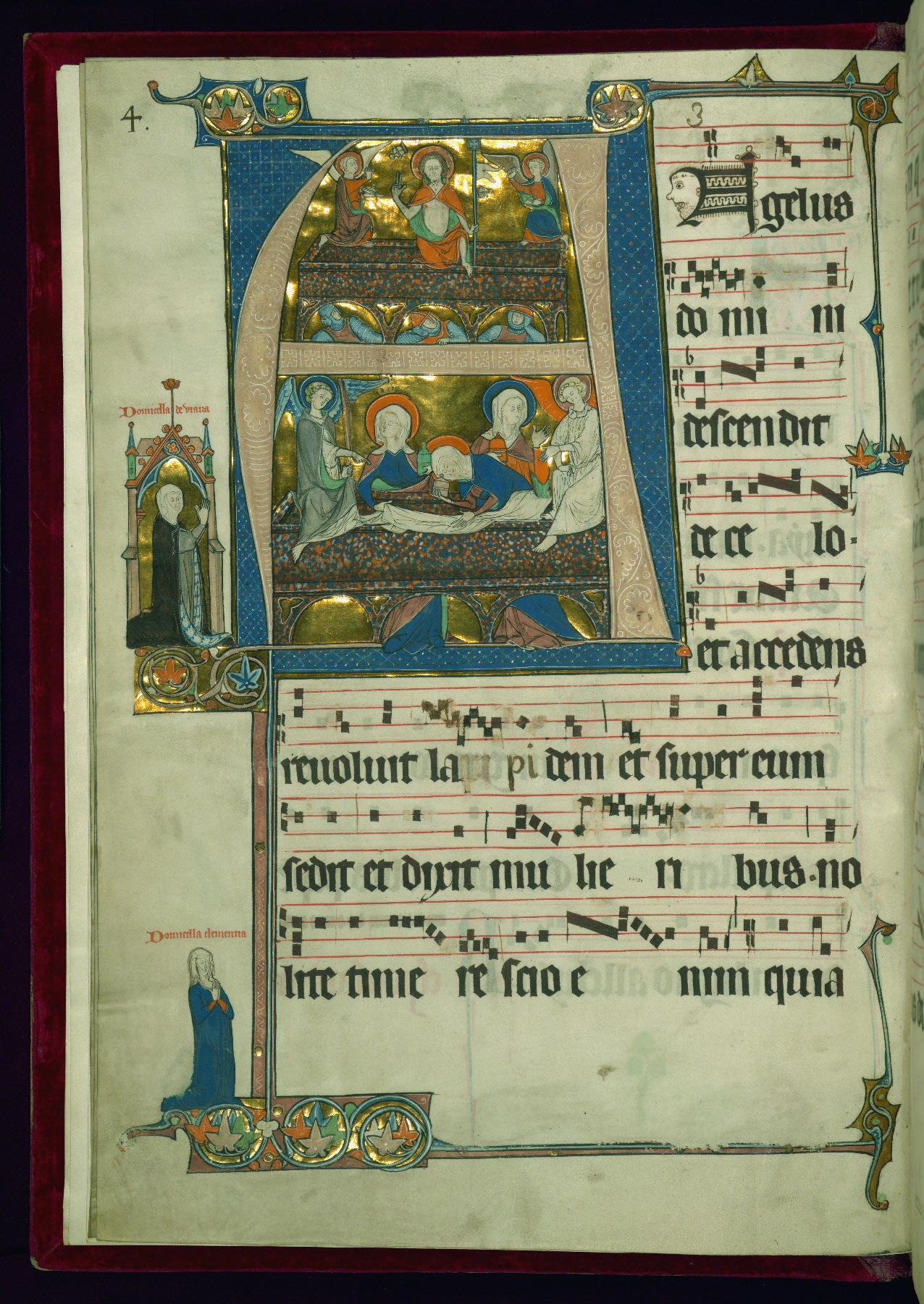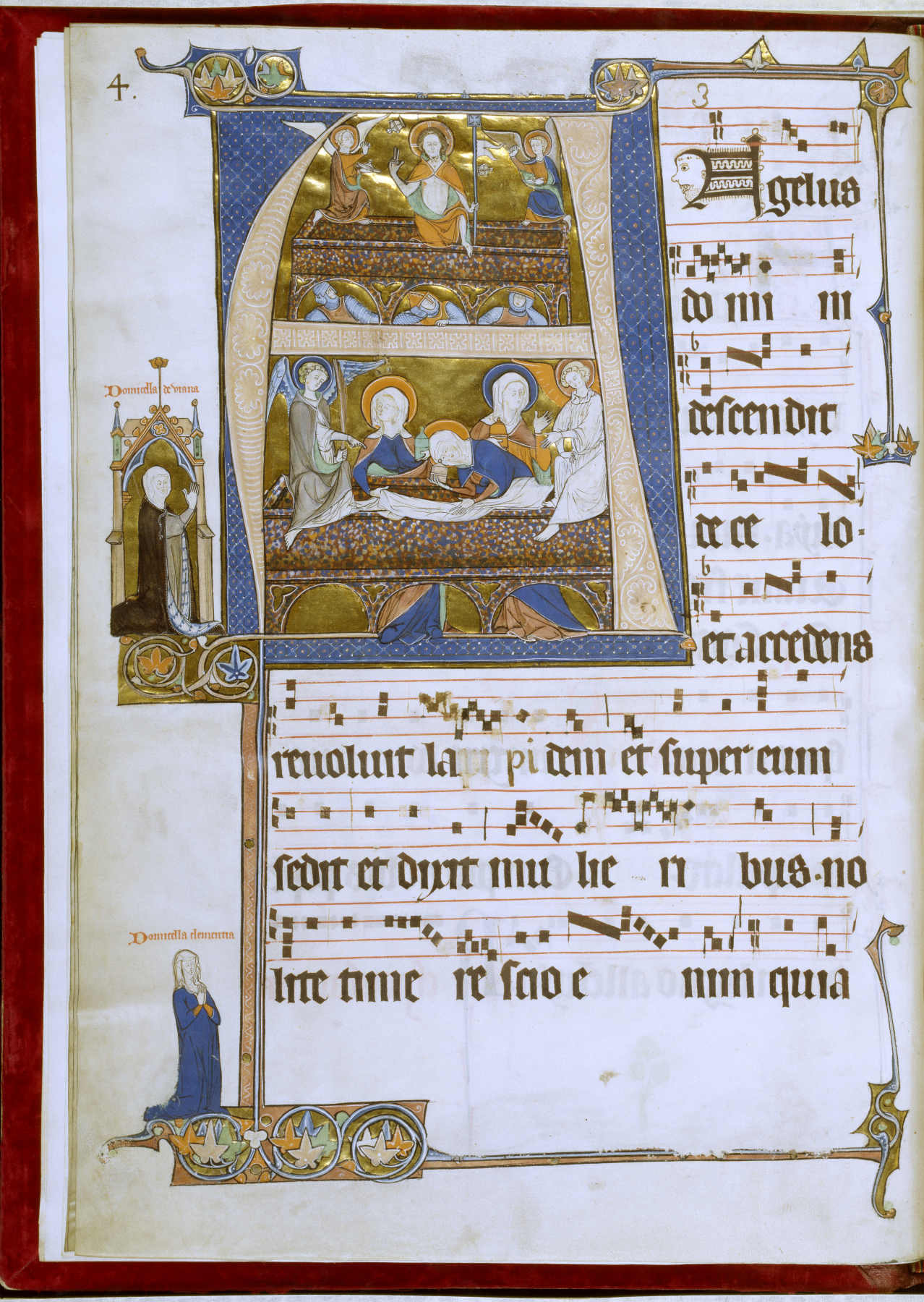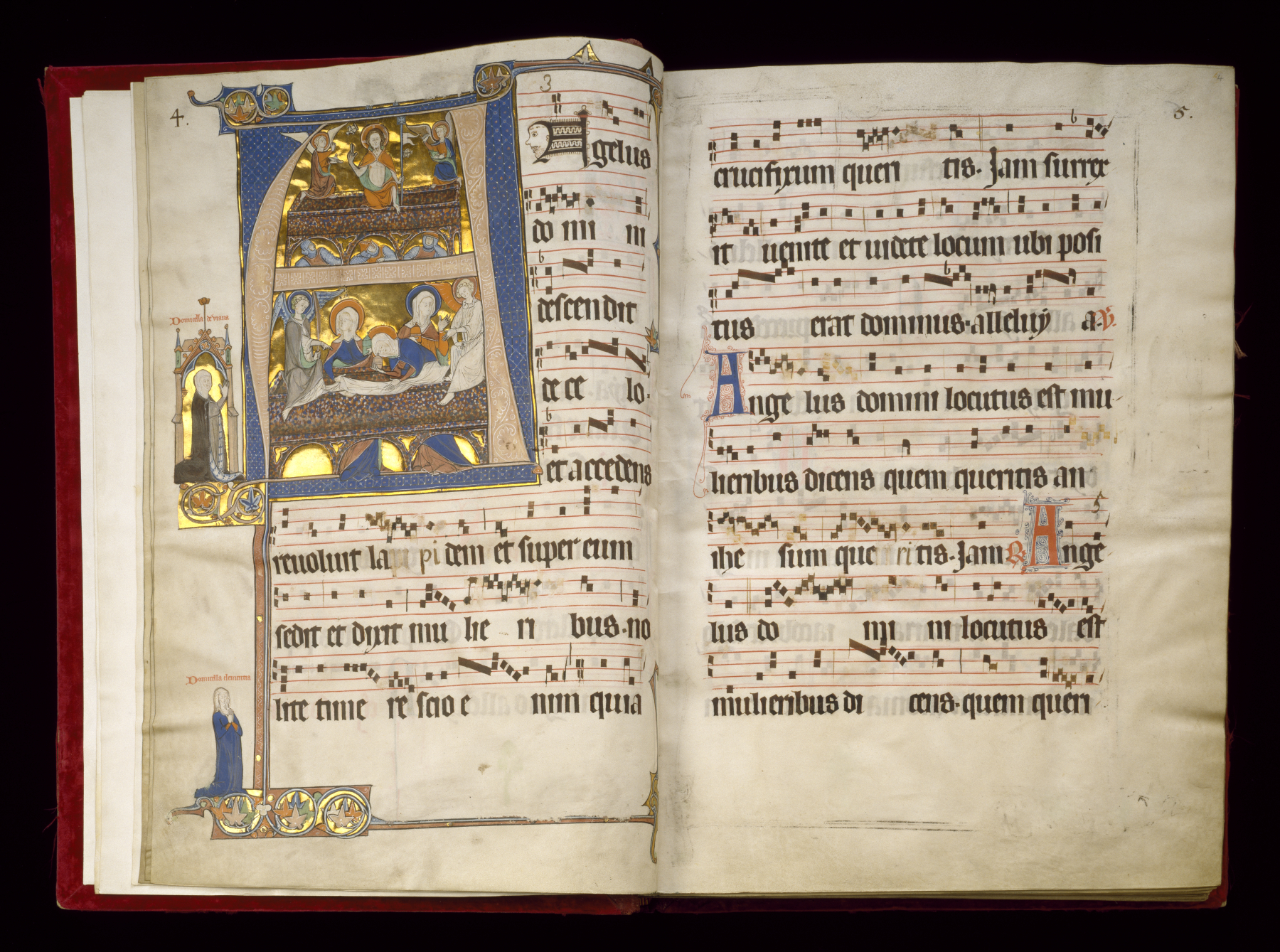Leaf from the Beaupré Antiphonary: Initial "A" with the Resurrection and Three Marys at the Tomb
Illuminated in Hainaut ca. 1280 and completed in 1290, this collection of richly decorated Cistercian manuscripts is a rare example of those being produced in Flanders at the end of the thirteenth century. Eighteen extant large historiated initials, flourished and decorated initials, and an abundance of amusing drolleries facilitate a liturgical narrative within the text. However, additions and removals within the text and imagery tells much about the use and history of the manuscript. The liturgical contents of this volume provide musical settings from Easter to the Assumption of the Virgin. This manuscript is the first of a set of three volumes destined for use on the abbess’ side of the choir at the Cistercian abbey of Sainte-Marie at Beaupré (diocese of Cambrai). Two sets of antiphonaries, each composed of three volumes, were originally created for the abbess and prioress of Beaupre. Of these two sets, the Walters Art Museum houses three volumes: two volumes from the set intended for the abbess and one volume from the set designated for the prioress. A fourth associated volume was created later to supplement W.759. It should be noted that apart from the volumes housed at the Walters, there survive four cutout initials from the other volumes. However, in 1865, these manuscripts were regrettably lost in a fire that spread from a house adjacent to Sotheby’s, where the books were being prepared for sale. In addition to the manuscripts' rich illumination, there is also a wealth of historical evidence throughout. Added at the beginning of each volume is a full-page inscription that details ownership: “Antiphonaire pour sevir dans le Coeur du coté de Ma-Dame L’abbesse, à Pâques jusque â L’Assumption de Notre Dame,” as well as an anathema for a thief, and a blessing for the faithful and honest user. Further information on provenance can be gleaned from the illumination itself; the third volume (W.761) contains an author portrait of the scribe/artist, a Cistercian monk named Johannes de Toussens (fol. 1r), while the manuscripts' patroness who married into the de Viane family is depicted with a younger woman named Clementia on fol. 3v of vol. 1 (W.759). Donations by members of the de Viane family to Sainte-Marie of Beaupré were recorded from 1244 to 1293. Since the volume’s assemblage, there have been updates in two major campaigns: ca. 1475-1500 at which time select thirteenth-century Offices were replaced in part by revisions and by additions placed at the end of the volume (see W.762 for supplement) and the second campaign in the eighteenth century at which time some thirteenth- and fifteenth-century leaves were removed, changes were made to both neumes and text passim, and additions were added at the end of the volume or in the Supplement. The first of these campaigns was presumably for abbess Jacqueline Hendricx (1473-1500), the second in the eighteenth century likely for the last abbess, Angéline de Lossy (1755-96), after which point the abbey was seized during the French Revolution. Drolleries are most often found on pages with historiated initials, and principally focused on centered bas-de-page scenes. While many drolleries were effaced, some traces of these images can be recognized by their shadowy outlines. Many of these erasures are thought to be at the hand of John Ruskin, who is also credited with authoring a separate table of contents, as well as several transcriptions of the Latin text found on numerous leaves. Truly a remarkable work, this multi-volume antiphonary was generously gifted to the Walters Art Museum in 1957 at the bequest of the Hearst Foundation.
Provenance
Provenance (from the French provenir, 'to come from/forth') is the chronology of the ownership, custody, or location of a historical object. Learn more about provenance at the Walters.
Lady Marie de Viane at Cambron, 1290, by commission; First daughter of Lady Marie de Viane at Cambron [date of acquisition unknown], by gift; Convent of Saint Marie de Beaupré near Grammont, Belgium, until the French Revolution [mode of acquisition unknown]; John Ruskin, ca, 1853 [mode of acquisition unknown]; Sale, London (?), June 22, 1921, III, no. 67; Henry Yates Thompson, London [date and mode of acquisition unknown]; Sale, June 7, 1932, I, no. 15; A. Chester Beatty [date and mode of acquisition unknown]; William Randolph Hearst [date and mode of acquisition unknown]; William Randolph Hearst Foundation [date and mode of acquisition unknown]; Walters Art Museum, 1957, by gift.
Exhibitions
| 1987 | Real People in the Middle Ages: Donor Portraits in Illuminated Manuscripts. The Walters Art Gallery, Baltimore. |
Geographies
Belgium, Hainaut (Place of Origin)
Measurements
Folio H: 18 11/16 × W: 13 3/16 in. (47.5 × 33.5 cm)
Credit Line
Gift of the William R. Hearst Foundation, 1957
Location in Museum
Accession Number
In libraries, galleries, museums, and archives, an accession number is a unique identifier assigned to each object in the collection.
In libraries, galleries, museums, and archives, an accession number is a unique identifier assigned to each object in the collection.
W.759.3V







